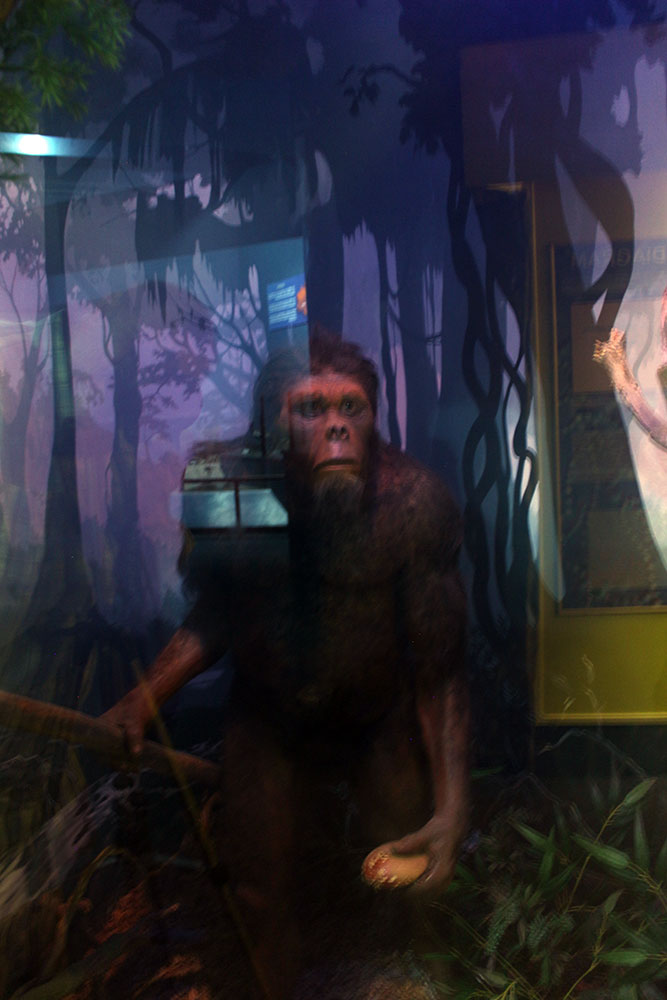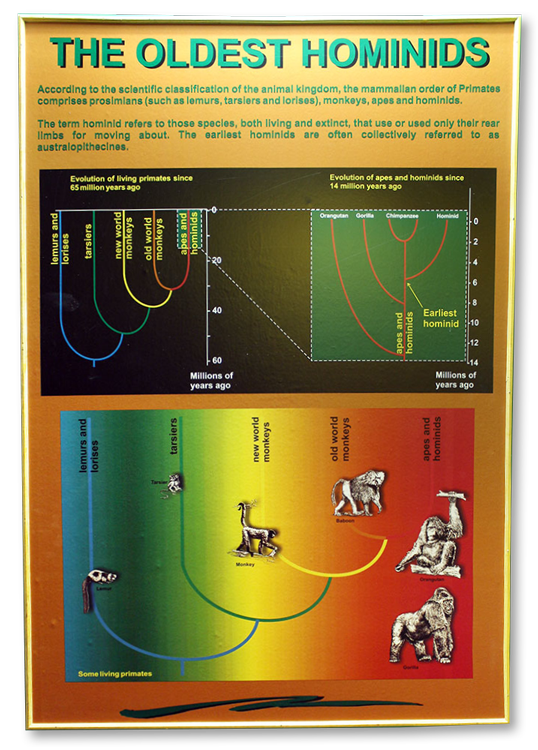Introduction To The Ancestors And Frontiers Galleries
- Introduction
- https://museumsnc.co.za/new_site/wp-content/uploads/2021/04/intro-voiceover.jpg
- ALL CATEGORIES
- https://museumsnc.co.za/new_site/wp-content/voiceovers/Introduction-voiceover.mp3
The history of the Northern Cape reaches back to the beginnings of humanity. Human origins are documented in Africa, with key Northern Cape sites reflecting some of the earliest innovations in cultural behaviour that have made us who we are.
Subsequently, modern humans evolved in this continent, and eventually spread to occupy every habitable corner of the earth. Closer to the present, and especially in the drier areas such as the Northern Cape, environmental constraints limited habitation to non-farming people, who were also the makers of stone tools right up into the era of colonial contact. Archaeologist Garth Sampson, who conducted research in the Karoo, has said “A brief comparison of surveys conducted elsewhere in the world reveals promptly and unambiguously that South Africa is richer in Stone Age remains than any other place on earth.”
Evidence for the emergence of herding in the western half of Southern Africa and of agricultural farming in the eastern half, more than 2000 years ago, signals the appearance of new food-producing lifestyles. Hunter-gatherers engaged in complex frontier interactions with incoming or nearby pastoralist or farming societies, but sustained a relatively independent hunter-gatherer existence in drier regions of the Northern Cape such as the Karoo and Kalahari.
In the last 500 years, an initially hesitant colonizing expansion out of Europe would see, in time, hunters and traders, explorers and missionaries, diggers of minerals, and a range of other frontiersmen, venturing inland as far as what is now the Northern Cape and beyond. Following the finding of copper, diamonds, and gold, colonization became a more concerted imperialism. European empires scrambled to control and exploit the continent.


Control meant more than the physical imposition of political power, closing off access to land, resources and trade for native inhabitants. As critical was the ideological definition of social relations, the fixing of racial categories. And towards this end history-writing became a not insignificant and highly contestable sphere of activity. The colonial version of South Africa’s past was notoriously biased. Archaeology Professor Nick van der Merwe remarked that “To look at the history of South Africa, [as it was taught in our schools through the twentieth century], is to look at human events through the wrong end of a telescope.” Z.K. Matthews, a son of the Northern Cape, who was an anthropologist and a leader of the ANC, once said: “History is worn by a people like part of its national dress, and where two people have shared in a series of events, their respective versions are often startlingly different in cut, colour and pattern.”
We need to be aware of this and to realise that there is a difference between what we call ‘history’, and what we may refer to as ‘the past’: ‘history’ is concerned with the past, but it has been written (or displayed) in the present. As Z.K. Mathews implied, historical ‘facts’ do not speak for themselves. They are created and manipulated, consciously or unconsciously, by historians, archaeologists, and ourselves. Our views on the past change because history is constantly reinterpreted and re-made in the present, partly because of shifting perspectives, and partly as new evidence is revealed by on-going research.
In this display about ancestors and frontiers, a storyline can be followed on one side as you proceed through the gallery. Because of continuing research, aspects of this story will change. On the opposite side, display panels give insight into just how we know what we claim to know about the past.
The Ancestors and Frontiers galleries were created by the archaeology and history departments and display team of the McGregor Museum, in 1997 to 1999.
